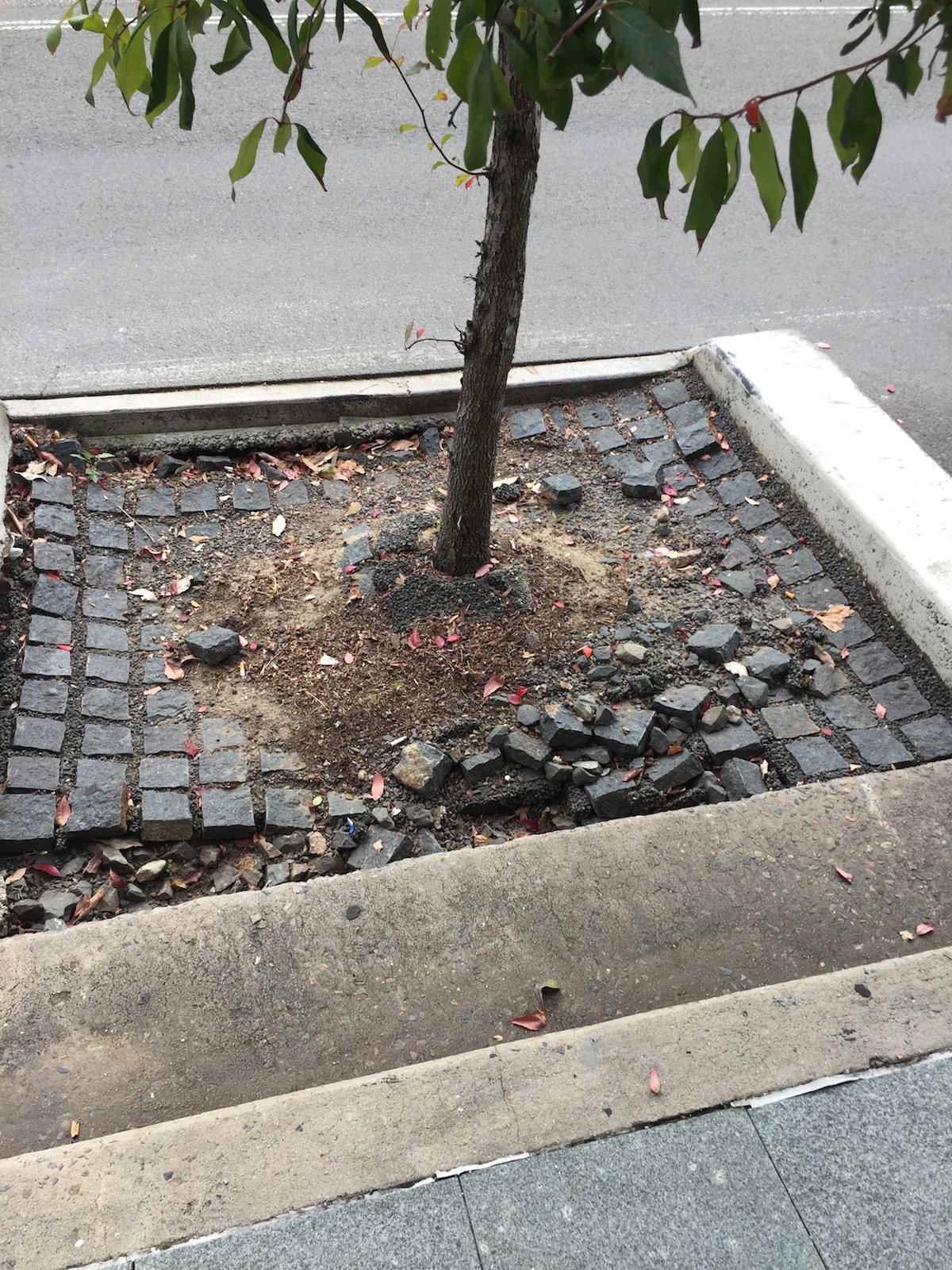
Top Outdoor Flooring Ideas For Your Patio
Revamping your patio can transform your outdoor living space into a beautiful, functional area perfect for relaxation and entertainment. Choosing the right outdoor flooring ideas
Permeable Tree Surrounds vs Typical Tree Pits
There are a lot of opinions over the best spec for a porous tree pit paving specification. We have been installing tree pits for nearly 20 years and have worked with many engineers, architects, landscapers, and arborists.
No single specification or product mix solves all scenarios, so we try to work on a job-by-job basis. The most common considerations can be found below.
Typically found on pathways, roadsides, cities, and shopping areas. Because councils recognise trees’ environmental and social benefits in these spaces, they are found on nearly every city shopping street.
The main issue associated with these trees is that the soil around the tree and the structural base mix on top of that is new it has had no time to settle. Compacting is often difficult because of area restriction (these pits are typically about 1.2m x 1.2m) and protection of the new tree.

Our best advice for these areas is to fill the area intended to be paved with porous paving to the top and allow it to settle naturally over the course of a few months. They should be hand compacted a few times over this period and topped up with loose aggregate to minimise trip hazard.
Once the area has settled fully, the top 30-40mm of loose stone can be removed, and the StoneSet is applied.
Of course, this is not always possible, so hand compact as much as possible and allow some excess budget to reapply the top layer of paving in case of any sinkage.

When we are installing over an established tree, it is usually just a matter of removing 30-40mm of the top layer and replacing it with new StoneSet paving. Tree roots can be an issue, so we will allow a small gap when finishing up to a trunk (about 50mm) and tree roots (about 20mm). This is done considering trip hazards and potential root movement or tree growth.

We will always recommend the installation of a 200mm dia. tree collar for new or young trees. The inside of the collar can be backfilled with loose stone after installation of the StoneSet porous paving to discourage the accumulation of litter.
We recommend creating a metal ring tree collar, which can be removed or left in place.

Stone offers a strong, solid finish that performs as a pathway in the same way the surrounding concrete, blocks, or asphalt will. For longevity, it relies on good compaction of the base, and minimal root and tree trunk disruption. We generally recommend the incorporation of rubber within the stone mix if roots are prominent or cracking has been an issue previously.
See this video to see the flexibility you can achieve with this blend.
Why not just use rubber on its own, you might ask? Well, in our experience rubber has two main flaws as a product for tree surround paving.
Unlike solid stone, rubber granules are susceptible to shrinkage. This can lead to gaps appearing around the edge of the tree pit and ultimately result in lifting of the surface.
The second is a concern regarding porosity. Rubber granules are generally used in a 4mm size, which leaves very small voids for water penetration. It also leaves a finish with greater surface tension, which needs to be broken each time it starts to rain to allow the flow of water. This means the root ball won’t receive as much water as a stone 6 or 10mm finish. The tree will then be more likely to go looking for water, leading to more root movement and the potential of surface movement or cracking.
Rubber granules are a great addition to many scenarios, but need to be used within a mix of stone to create a hardwearing, stable surface and maximise void content.

A tree trench is the term we use to describe a large area that has trees in it, but has areas between the trees that will be trafficable by foot. A nature strip, as pictured, would be a tree trench.
With tree trenches you need to consider the higher than normal volume of traffic using the areas between the trees. All preparation and consideration is the same as a normal tree pit, but with the area away from the tree trunk needing to be treated as a regular footpath. This means gaining compaction to match required specification for use, and if compaction is an issue, the use of a recycled plastic cellular system to give base stability and load bearing capability without risk of sinkage. We use the Atlantis Gravel Cell.

There are two main considerations when deciding on particle size – expected traffic, and porosity required.
Large tree surrounds have a good catchment area so a smaller stone can be used. We would recommend no smaller than 6mm. Small tree pits will generally receive less foot traffic but require a higher void content to maximise water penetration. A 10mm stone is recommended in this case.

We always look at each project based on its own merit and will customise a solution and product mix recommendation depending on the individual site requirements. Contact StoneSet today for a free non-obligatory quote.
"*" indicates required fields
Quick Links

Revamping your patio can transform your outdoor living space into a beautiful, functional area perfect for relaxation and entertainment. Choosing the right outdoor flooring ideas

Building a home in today’s environmentally conscious world goes beyond aesthetics and comfort; it’s also about responsibility. Sustainable house designs minimise the impact on our

Modern home design constantly evolves, with homeowners and architects searching for innovative solutions that blend aesthetics, functionality, and sustainability. As urban spaces become more premium,